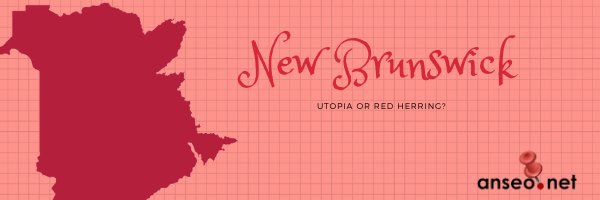The NCSE Annual Research Conference took place today which basically asked the question, is a fully inclusive school system right for Ireland? Teresa Griffin said before the conference:
“We want Irish children with additional complex needs to have the best education outcomes from our schools. Children with additional needs can attend mainstream schools or special classes or special schools. But is this the best structure or are there other better ways? As well as considering international and national research, we have been looking at the Canadian province of New Brunswick and Portugal, both of which have developed fully inclusive schools”.
Teresa Griffin
Later in the article, the NCSE state that: The NCSE has not, to date, found any substantial evidence that students with additional needs have better outcomes in special schools/classes, and, [respondents to a consultation] believed that all children should be educated together in the same school. They considered that there were broader benefits to society from all children learning and growing up together. The experience of New Brunswick would support this view as a fully inclusive system is seen as a human right.
I decided to have a brief look at the New Brunswick education system and find out what the experts in Canada are saying about the Inclusive Education Policy which was brought into law in 2013 and its impact since. The reason for looking at this system and not the Portuguese one is simply because I don’t speak Portuguese and wouldn’t be able to find information quickly.
The conference that was held today seemed to lean very heavily that the NCSE are going to recommend to the Department of Education that they are going to follow this model. In fact, Minister Joe McHugh even came along to say that he is supportive of this.
My understanding is that Teresa Griffin will not be recommending extra resources to schools in order to achieve this full inclusion model. I decided the best thing to do would be to do two things:
- Compare the New Brunswick Education System to the Irish Education System in terms of data
- Find articles about what experts in Canada think about the New Brunswick model
Thankfully, data is easy enough to come by these days if you know where to look, and where better to find it than government documents? Is New Brunswick the utopia that the conference presenters seemed to believe it is? Let’s find out.
No lies, just plain statistics
I checked out The Summary Statistics of the School Year 2018-2019, which was prepared by the Policy & Planning Division of the Department of Education and Early Childhood Development in March 2019. It’s a delightful array of tables and statistics, which are official data from the government. As teachers in Ireland will know, government statistics around class size are rarely a reflection on reality so the only fair way to compare this data was with official Irish government data, which for the record insists we have average class sizes of 15.3 pupils.
Just one thing to note before I get into the data: the data in New Brunswick is from the full K-12 network, thus includes second level. It appears that this doesn’t make much of a difference in the data. Right – let’s go.
Setting the Context
Let’s first look at population so we can get a bit of a context. We have just over 5 times the number of pupils attending primary schools in Ireland as we can see here so we’ll look at all the data based on this.
| New Brunswick | Ireland | |
|---|---|---|
| School Going Population | 97,895 | 509,562 |
A total inclusion model, firstly makes sense, economically at least, if one has an optimal number of schools. It is obviously much more expensive to fund this model when you have a lot of schools. Our first hurdle is clear. Only 12% of New Brunswick’s schools have less than 100 pupils and 38% of our schools are in the same situation. New Brunswick only has 296 schools (an average of 331 pupils per school) to Ireland’s 3,305 (an average of 154 pupils per school.) Ultimately, this straight away demonstrates that if every school in Ireland was to get the basic resources of a New Brunswick school, it would immediately need double what they are doing. It’s also worth noting that in New Brunswick, pupils go to their nearest school from their house. This is not the case in Ireland, especially for children with additional needs.
However, that aside, what about the big stuff – class sizes, pupil teacher ratios and all that stuff?
| New Brunswick | Ireland | |
|---|---|---|
| Average Pupil-Teacher Ratio | 12.7 | 15.3 |
| Average Class Size | 20.9 | 24.5 |
Despite the fact that both governments are probably doing their best to get those figures as low as possible on paper, it’s easy to see that New Brunswick have a big advantage over Ireland. However, class size alone isn’t the full story when it comes to inclusion. With more complex cases, children require SNA access, so how do we compare to our friends?
New Brunswick
Ireland
The figures speak for themselves. However, let’s exasperate them even further with this table. It is the number of teachers a school has depending on the number of pupils in the school. I got this data from looking through the complete list of schools in New Brunswick and comparing it to the Staff Allocation table from the Department of Education in Ireland.
| Size of School | New Brunswick | Ireland |
| Number of Teachers in 25 pupil school | 3.5 | 2.5 |
| Number of Teachers in 50 pupil school | 6 | 2.5 |
| Number of Teachers in 75 pupil school | 7 | 3.5 |
| Number of Teachers in 100 pupil school | 8 | 5 |
| Number of Teachers in 200 pupil school | 16 | 9.5 |
| Number of Teachers in 300 pupil school | 22 | 14.5 |
| Number of Teachers in 400 pupil school | 30 | 19.2 |
| Number of Teachers in 500 pupil school | 35 | 24 |
I have included an average SET allocation of 1 SET teacher for every 5 mainstream class teachers to make things fair, but, as you can see, the data speaks for itself again, especially in small schools.
What else did I find in my perusal of this New Brunswick model? Let’s look at other supports that are available to them.
In New Brunswick they have a number of Therapists working directly in schools, 78.4 to be exact, and in Ireland, it’s zero. How many social workers work directly in schools in New Brunswick? It’s 61. In Ireland, it’s zero. How many behaviour specialist teachers are there in New Brunswick? 26. In Ireland: you guessed it… well, it’s 9.
In fact the only statistic we actually beat New Brunswick on is the number of psychologists per capita working with our schools. Given that New Brunswick are no longer offering diagnoses to pupils, one could argue they need less support in this area, but that’s probably a little unfair.
That’s the data, so what do the folks in Canada really think about this inclusion project.
Enter Jody Carr
I guess if you want to sell something, the best person to send is the person who came up with the idea, and that’s exactly what the NCSE did today. However, what is the real story with this inclusive model? What is actually happening in New Brunswick since this model of inclusion was brought in. Now, I’m no academic, and I really wanted to get as much information as I possibly could as quickly as possible in order to be able to get an article out less than 24 hours after the conference today so I googled the following phrase to see what would come up.
What do teachers in New Brunswick think about total inclusion model?
I thought I’d get a large number of results but this search yielded only 5 before linking to more irrelevant sites. It was interesting to see that 2 of the results were in favour of the model and 3 of them were against the model.
More interestingly yet was that the articles in favour of the model were from Canadian government websites. The 3 articles that spoke against the model were not. I’m going to copy and paste some of the things that jumped out at me from these articles and I will link to them so you can see them too.
- Grade 2 literacy results down 12% since 2010
- Inclusive classrooms need more resources to curb low test scores
- Striving for the “full inclusion” of all students in the publicly-funded school system is a most worthy goal, but it remains an illusion for far too many students in New Brunswick schools.
- It is becoming clearer that the New Brunswick model is broken and badly needs to be re-engineered to better serve those with severe challenges and complex needs.
- A researcher (Paul Bennett) who sounded the alarm about New Brunswick's inclusion model five years ago says the problems are getting worse.
- Teachers are being forced to wear protective clothing made from Kevlar to protect them from violent situations in their classrooms
I think it’s well worth looking through these articles about the New Brunswick model, especially the 3rd one, which is an academic paper which makes 10 recommendations for the provision of Special Education Teaching.
Ultimately, the New Brunswick Model seems to have two big problems. It can’t be replicated in Ireland without doubling our resources. However, most importantly, it appears that the adage: all that glitters is not necessarily gold, rings very true.
Personally, I am extremely wary of the reasons that the NCSE is pushing to try and get this model over in Ireland. Their reasons are:
- SEN is too expensive in Ireland (18% of total education budget)
- We are breaking UN conventions by having a segregated education system for pupils with additional needs.
The second reason, to me, seems rather weak. Our entire education system flies in the face of UN conventions on Human Rights given that it is 97% denominational, and we all don’t seem to care very much about this!
Stakeholders need to examine the New Brunswick model very carefully and make sure that they don’t fall into any traps. I’m only one person with an Internet connection and I feel I’ve unearthed quite a bit to worry about. Hopefully the various bodies will find the time to ask big questions about this model before it’s too late.


